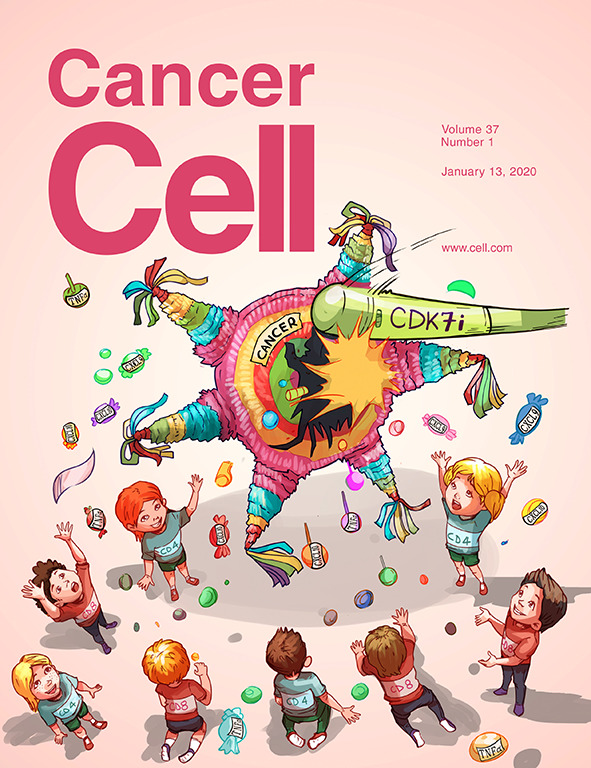T的拯救:扩大滤泡性淋巴瘤的滤泡T细胞群
IF 44.5
1区 医学
Q1 CELL BIOLOGY
引用次数: 0
摘要
滤泡性淋巴瘤是一种起源于淋巴的富含B细胞的滤泡结构的肿瘤疾病。在这一期的Cancer Cell中,Abe等人使用多组学分析来鉴定和表征不同的滤泡T细胞亚群,这些亚群可用于对滤泡性淋巴瘤的预后进行分层。本文章由计算机程序翻译,如有差异,请以英文原文为准。
T’s to the rescue: Expanding the follicular T cell universe in follicular lymphoma
Follicular lymphoma is a neoplastic disease of B cell-rich follicular structures of lymphoid origin. In this issue of Cancer Cell, Abe et al. use multi-omics analyses to identify and characterize distinct follicular T cell subsets that can be used to stratify follicular lymphoma prognoses.
求助全文
通过发布文献求助,成功后即可免费获取论文全文。
去求助
来源期刊

Cancer Cell
医学-肿瘤学
CiteScore
55.20
自引率
1.20%
发文量
179
审稿时长
4-8 weeks
期刊介绍:
Cancer Cell is a journal that focuses on promoting major advances in cancer research and oncology. The primary criteria for considering manuscripts are as follows:
Major advances: Manuscripts should provide significant advancements in answering important questions related to naturally occurring cancers.
Translational research: The journal welcomes translational research, which involves the application of basic scientific findings to human health and clinical practice.
Clinical investigations: Cancer Cell is interested in publishing clinical investigations that contribute to establishing new paradigms in the treatment, diagnosis, or prevention of cancers.
Insights into cancer biology: The journal values clinical investigations that provide important insights into cancer biology beyond what has been revealed by preclinical studies.
Mechanism-based proof-of-principle studies: Cancer Cell encourages the publication of mechanism-based proof-of-principle clinical studies, which demonstrate the feasibility of a specific therapeutic approach or diagnostic test.
 求助内容:
求助内容: 应助结果提醒方式:
应助结果提醒方式:


